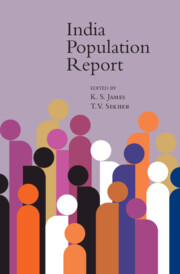13 - Occupational Health of Selected Industry Workers in India
A Systematic Review and Meta-Analysis
Published online by Cambridge University Press: 15 August 2023
Summary
Introduction
A large number of epidemiological research reveal that work environment factors (that is, the effects of air pollutants, coal dust, heat, noise, humidity, vibration, and so on) are highly correlated with employees’ health and well-being (Chatterjee, 2011; Dey and Pal, 2012; Krishnamurthy et al., 2017; Saha, 2018; Venugopal et al., 2020; Prasad et al., 2020). The gravity of occupational health is well understood in the recent International Labour Organization (ILO) estimate that indicates that 2.8 million deaths per year are attributable to occupational diseases and injuries worldwide. In addition, over 374 million workers are involved in non-fatal occupational accidents causing serious injuries and absences from work (ILO, 2020). Therefore, occupational health has always drawn the attention of researchers and policymakers all over the world. However, coal miners and iron–steel workers are exposed to hazardous environments on a daily basis (Kunar, Bhattacharjee, and Chau, 2008; Oliveira, Cacodcar, and Motghare, 2014; Nowrouzi-Kia et al., 2018, Prasad et al., 2019). These industries continue to be associated with high levels of illnesses, accidents, and injuries compared to other industries (Dash et al., 2015, Ukey-Ujwala et al., 2015).
In India, the coal and iron–steel industries have experienced a strong expansion in recent years, with the extension that India is the second-largest coal and crude steel producer in the world (Ministry of Mines, 2019; Indian Steel Association, 2020). These two industries are regarded as one of the most hazardous and high-health-risk sectors due to the complex nature of the job and work environment (Akanksha et al., 2015; Tripathy and Ala, 2018). According to recent estimates in Indian coal mines, the total number of fatalities were 50 and 44 for 2018 and 2019, respectively, and their fatality rates per 1,000 workers were 0.11 in both years. Likewise, the total number of serious injuries for 2018 and 2019 were recorded as 211 and 71, respectively (Ministry of Labour and Employment, 2015; Ministry of Coal, 2020). Moreover, several studies revealed that a majority of workplace accidents and injuries are attributed to various reasons such as unsafe work practices, poor safety environment, risk-taking behaviours, emotional instability, physical discomfort, and altered behaviour (Maiti and Bhattacherjee, 2001; Ghosh, Bhattacherjee, and Chau, 2004; Ghosh and Bhattacherjee, 2009; Bhattacherjee, 2014; Senapati, Bhattacherjee, and Ravichandran, 2017).
- Type
- Chapter
- Information
- India Population Report , pp. 498 - 551Publisher: Cambridge University PressPrint publication year: 2024

